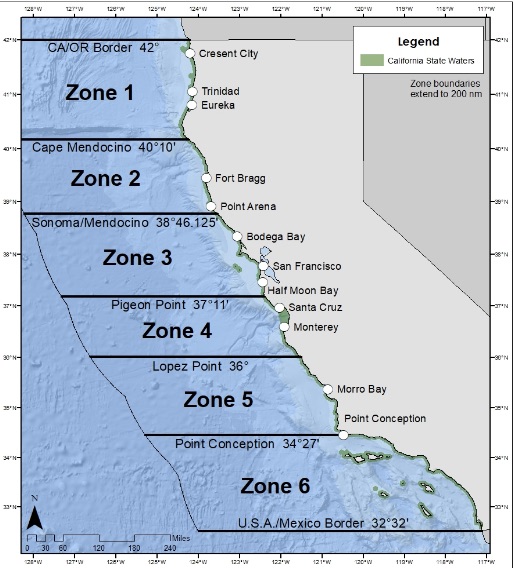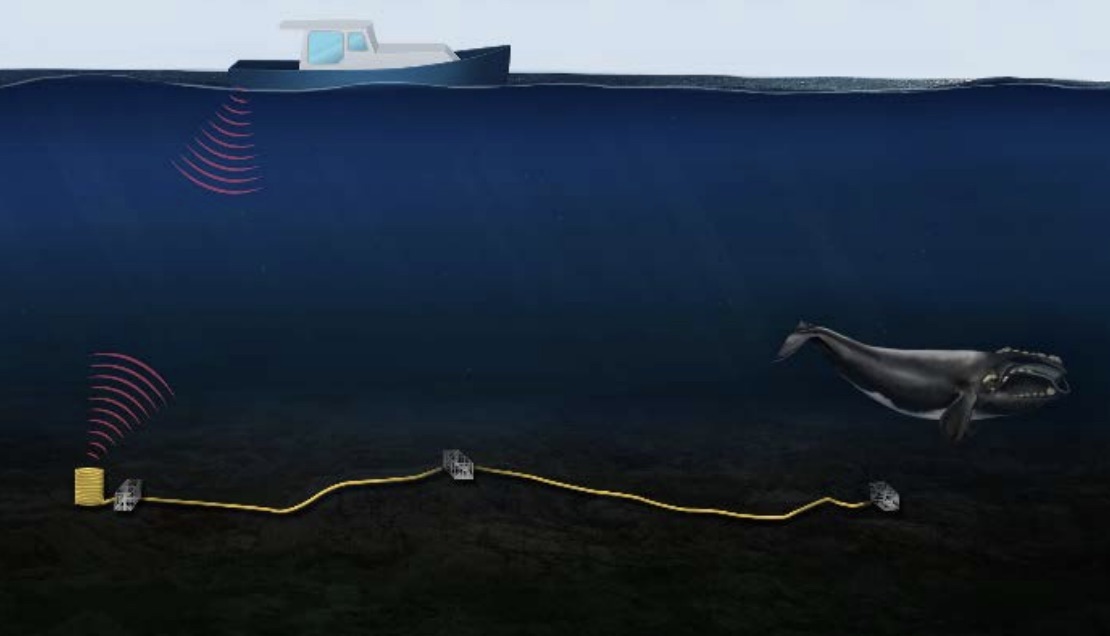|
Getting your Trinity Audio player ready...
|
PRESS RELEASE. From the Center of Biodiversity
For Immediate Release, December 9, 2021
Contact: Kristen Monsell, (510) 844-7137, kmonsell@biologicaldiversity.org
Kristen Monsell, (510) 844-7137, kmonsell@biologicaldiversity.org
Legal Petition Seeks Federal Ropeless Rule to Save Whales, Turtles From Fishing Gear
New Pop-Up Traps Could Prevent Deadly Entanglements
Related Information:
WASHINGTON— Entanglement in fishing gear has become a leading threat to endangered whales and sea turtles on all U.S. coastlines. So the Center for Biological Diversity formally petitioned the National Marine Fisheries Service today to require crab, lobster and other trap fisheries to convert to new ropeless or “pop-up” gear within the next five years. The petition requests that the agency prioritize the transition in national marine sanctuaries.
 In 2018 alone more than 100 large whales — including critically endangered North Atlantic right whales and Pacific humpback whales — were reported entangled in fishing gear in the United States. This is likely only a fraction of the actual number of animals of all kinds seriously injured or die in fishing gear, since most entanglements go unobserved.
In 2018 alone more than 100 large whales — including critically endangered North Atlantic right whales and Pacific humpback whales — were reported entangled in fishing gear in the United States. This is likely only a fraction of the actual number of animals of all kinds seriously injured or die in fishing gear, since most entanglements go unobserved.
“Federal officials can save whales and sea turtles from deadly entanglements by requiring the conversion to ropeless fishing gear,” said Kristen Monsell, oceans legal director at the Center. “Way too many whales have been caught and killed in recent years. Crab and lobster fishers are still using 19th century technologies despite new alternatives that could eliminate entanglements in buoy lines. But change isn’t going to happen on its own, so our petition seeks a deadline to convert to ropeless gear.”
Today’s petition notes that while cost and other factors have hampered the widespread adoption of ropeless gear, a legal requirement to use such gear will further technological developments and investments that bring down the cost.
The proposed change would protect whales and other animals from entanglements in California’s Dungeness crab fishery, New England’s lobster fishery, the stone crab fishery in the Gulf of Mexico, and others.
Most entanglements have occurred in trap fisheries that use heavy vertical ropes connecting a surface buoy to traps on the seafloor. Those ropes get caught on whales’ mouths, fins or tails and cinch down as they drag the heavy traps, sapping their strength and eventually drowning them.
Pop-up traps use lift bags or buoys on coiled ropes triggered by remote or time-release sensors to float the traps to the surface, eliminating those static vertical lines. Ropeless gear has been tested and used in the United States, Canada and Australia. The Fisheries Service has called it “game changing” and “a future solution to whale entanglement.”
As climate change has altered ocean conditions, there have been an increasing number of entanglements in nearly all regions. Warming waters, for example, can shift the distribution of prey, forcing whales to look for food in areas that increase the overlap between the animals and fishing gear.
The Center has sued state and federal agencies for allowing entanglements of endangered whales and sea turtles. Each of these entanglements violates the Endangered Species Act.
The Center’s 2017 lawsuit against the California Department of Fish and Wildlife led state officials to adopt new regulations on the state’s commercial Dungeness crab fishery to prevent entanglements. And its 2018 lawsuit against the Fisheries Service led to new rules to protect North Atlantic right whales from entanglement in lobster gear. But those regulations still allow far too many entanglements to occur.
Historical whaling and sea turtle harvest wreaked havoc on these enormous animals’ populations. Despite 50 years of protection under federal law, still-diminished populations constrain ocean ecosystems that once thrived with nutrients available from whale poop. Whales also sequester carbon. The International Monetary Fund valued a large whale’s carbon uptake at $2 million over its lifetime.
“Whales, sea turtles and other animals shouldn’t have to suffer and die from entanglements,” Monsell said. “Not when there’s a technological fix. Ropeless fishing gear promises to help whales and fisheries by making a more productive ocean.”
How does traditional fishing gear work? Image is available for media use.

The Center for Biological Diversity is a national, nonprofit conservation organization with more than 1.7 million members and online activists dedicated to the protection of endangered species and wild places
Ropeless Fishing Is Underway In California Beginning 2021
From Desert Star Systems
The California Department of Fish and Wildlife has approved the use of alternative gear for ropeless fishing using pop-up buoys on demand. This upcoming fishing season for Dungeness Crab there will be commercial harvesters using ropeless gear to continue fishing in a safe way for both migrating whales and the fishermen themselves.

A WIN-WIN Situation
With ropeless gear, California is set to join other fishing grounds that have experienced zero whale entanglements using ropeless technology. Fishing operators will also receive the added benefits from fishing a more full season, safety from catch-theft, and a reduction in gear loss due to inclement weather or ship strikes.
Less gear loss, greater catch protection, increased fishing season, and ZERO whale entanglements. That’s my new definition of a WIN-WIN situation heading into the 2021 fishing season!
Ropeless Consortium Annual Meeting
Brought to you by Ropeless.org, part of Woods Hole Oceanographic Institution
October, 2021
A weekly newsletter series meant to engage fishers in a discussion about ropeless fishing. Each week a new topic is sent out and discussed over breakfast. Discover a new way to fish with bottom stowed rope and pop-up buoys on demand.
A Complete Ropeless Fishing System
Commercial Use Since 2012.
The only tried and true Ropeless Fishing System using pop-up buoys on demand. Featuring a robust, yet adaptable and reliable design for every fisherman around the globe.
Featuring Two Ropeless Fishing Systems: Ropeless Fisher Offshore™ & Ropeless Fisher Coastal™

View the brochure
Take a look at how Ropeless Fisher™ works, its various components, common concerns/questions and much more. In this brochure, you can look forward to a complete guide to understanding the fundamental aspects and developments of Ropeless Fisher™.
VIEW Brochure ONLINE
Components

Acoustic Release
The release mechanism which sits on the side of a release bag. Trigger a release remotely via a sonar transducer. The ARC release mechanism triggers and releases within fractions of a second and is re-armed in less than one minute.

Release Bag
Create your own or buy a kit. This hard oyster mesh bag holds coiled rope and buoys until the ARC is triggered for a release. Upon the triggering event, the release cord will give way and positive buoyancy from the hard floats will cause the bag to open.

Virtual Gear Marking
The Ropeless Fisher App™ allows for free virtual gear marking to avoid gear overlay. A fisher simply presses a button and the app logs GPS coordinates. You can also set a “visibility radius”, if someone is outside of it, they cannot see your gear locations.
Testimonials












